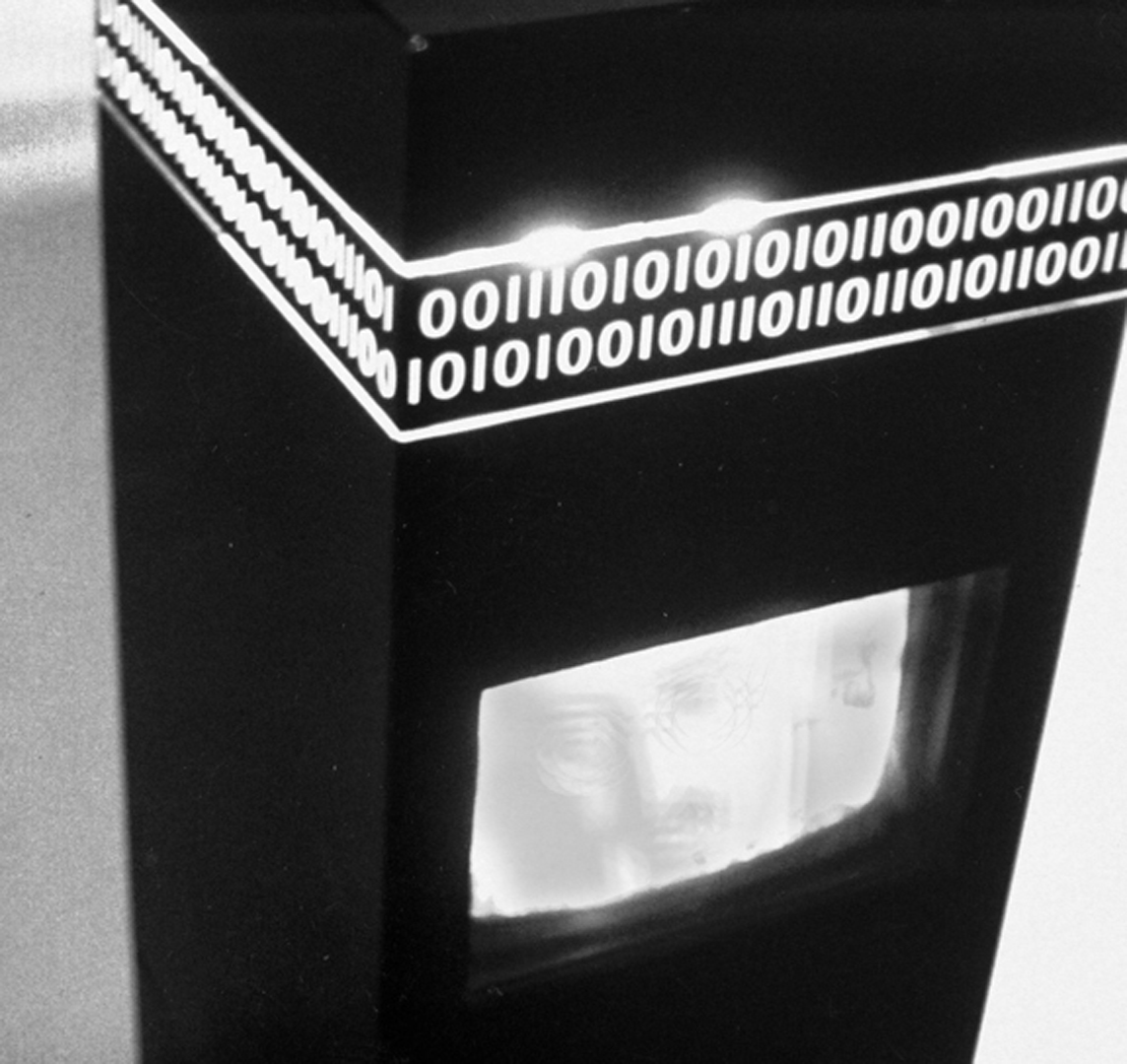Public Domain Inc.: Public Domain Kiosk Project
Artist(s):
Title:
- Public Domain Kiosk Project
Exhibition:
Medium:
- Installation
Category:
Artist Statement:
The word “virtual” has been so overused that it is difficult to use the term without flinching, and yet, despite its rise to the status of premier buzzword of the nineties, it continues to suggest a certain relationship between consciousness and electronic space that is rich and descriptive. Just beneath the thin, slick, corporate gloss of the term’s trendiness is a volatile zone of fractures containing a leaky matrix of nested meanings including, but not limited to: artificiality, simulation, representation, mimesis, prosthesis, multidimensionality, multiplicity, hyperness, velocity, otherness, the mechanical, the machinic, high technology, and, by extension, digitalization, fractal scaling, transpositionality, and networking.
A close reading of this complex system of semiotic leakages reveals a thoroughly mapped but unstable fault where the realms of the human and the machine are continually collapsing into each other. It is precisely along this fault line, on the “new edge” of the cultural domain, that a stepped-up conflation of separate consciousnesses is occurring that is becoming an ever more sexed, violent, hallucinogenic, media-dependent, shared mindscape. This evolving collective consciousness is characterized by a radical obsession with the reflected traces of the transformation of the human into the cyborg; the transformation’s inscription as recycled mythologies animates a kaleidoscope of transient tattoos constantly re-writing shifting patterns (with neon intensity as the latest true color), hypermedia updates to the textual/cultural body. These are a new suit(e) of tribal scarrings worn in realtime and written in mutable signs on an electronic skin whose surface is an active projection screen for drifting, montaged morphs.
It could be argued that humans have always been cyborgs, and that it is only the naming of the awareness of this condition that is new. Humans have always co-developed with the tools of technology creating a feedback loop that, perhaps from the very beginning, was erasing the difference between humans and machines through increasingly sophisticated machinebody-metaphors, and later machinemind-metaphors. The tool, as such, has a long history as an add-on, a bodily peripheral, a prosthesis—and, with the invention of writing, as an internalized machine/apparatus.
As this process continues, it is most easily evidenced in recent developments of devices constructed as attachments to the body, and redesigned to be incorporated via implantation or nerve/machine integration (e.g., artificial hearts, prosthetic limbs, hearing aids, etc.) The history of human dependence on mechanical devices for survival and maintenance of the individual body exemplifies the more general dependency of society on technology. Given the direction of technologies of the future such as nanotechnology, artificial intelligence,artificial life, biochips, and synthetic neurons, the body’s rate of absorption of the machine will only quicken.
How will the cyborg organize relative to the “virtual”? Can the idea of virtual organization be read fractally as a scaled phenomenon representative of new cultural formations within e-space?
The interactive work presented by Public Domain, Inc. frames these questions by deconstructing its own principles of institutional formation, and attempting to design effective metaphors that simultaneously describe, illustrate, and demonstrate a model of interpretation of virtuality. The recognition of the centrality of the phenomenon of collapse to the never-ending reconstruction of meaning is taken as license for the use of a collaged fluxus of poetic images, texts, and sounds that askew conclusiveness in favor of dreams and dada. Implicit in this approach is a high valuation of noise, chaos, anarchy, nonhierarchalization, improvisation, conflict, discontinuity, experimentation, invention, and wild speculation uninhibited by any need to make sense. Ironically, it probably will anyway. If not now, then later.
Public Domain, Inc. (PD) is a 501 (c)3 non-profit organization whose stated mission is to explore the interface between art, technology, and theory. To that end, Public Domain is presently engaged in five projects with complementary agendas that supplement each other to create a system of interdependent activities. They are: 1) Perforations, 2) Working Papers, 3) The Kiosk Project, 4) Video Production, and 5) Networking.
1) Perforations is a quarterly journal/media kit. Each issue develops different themes of contemporary life as they relate to technology. Topics are generally broadly defined in order to accommodate approaches to the material that are experimental, creative, and informed by multiple perspectives.
2) Working Papers is a series of presentations devoted to the various crises of legitimation, representation, and communication that constitute the contemporary scene of modernity and postmodernity. Participants come from a wide variety of disciplines, cross-disciplines and multi-disciplines including art, philosophy, literature, poetry, literary criticism, computer science, architecture, video art, film, and music.
3) Upon completion, the Kiosk Project will be a series of interactive, hypermedia stations situated in public areas that will provide artists working in electronic media with an exhibition venue other than the traditional gallery or museum.
4) Video Production: Public Domain is actively planning to videotape and broadcast Working Papers on public access cable television.
5) With the recent donation of a Sun server to Public Domain, the group is able to provide Internet access to both its own members as well as designated representatives of other nonprofit arts organizations. PD’s existence as an Internet node has greatly facilitated interaction between members, provided a means of contact with participants in Working Papers, and allowed artists and theorists from around the world to contribute to Perforations, and to remain in communication with PD. The Internet has become the infrastructure necessary for Public Domain’s on-going design as a virtual organization.





